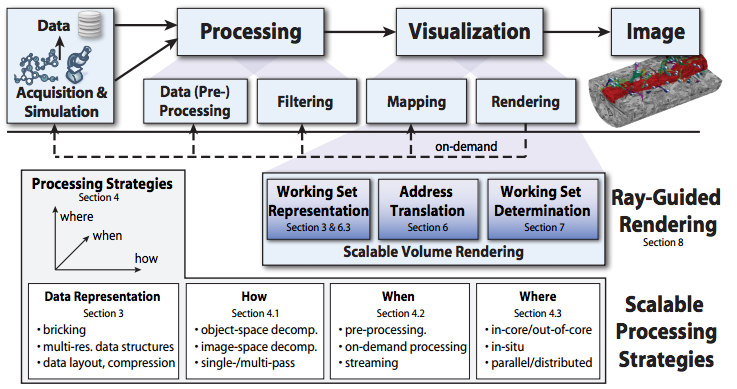
State-of-the-Art in GPU-Based Large-Scale Volume Visualization
Computer Graphics Forum, 2015.
This survey gives an overview of the current state of the art in GPU techniques for interactive large-scale volume visualization. Modern techniques in this field have brought about a sea change in how interactive visualization and analysis of giga-, tera-, and petabytes of volume data can be enabled on GPUs. In addition to combining the parallel processing power of GPUs with out-of-core methods and data streaming, a major enabler for interactivity is making both the computational and the visualization effort proportional to the amount and resolution of data that is actually visible on screen, i.e., textquotedblleftoutput-sensitivetextquotedblright algorithms and system designs. This leads to recent output- sensitive approaches that are textquotedblleftray-guided,textquotedblright textquotedblleftvisualization-driven,textquotedblright or textquotedblleftdisplay-aware.textquotedblright In this survey, we focus on these characteristics and propose a new categorization of GPU-based large-scale volume visualization techniques based on the notions of actual output-resolution visibility and the current working set of volume brickstextemdashthe current subset of data that is minimally required to produce an output image of the desired display resolution. Furthermore, we discuss the differences and similarities of different rendering and data traversal strategies in volume rendering by putting them into a common contexttextemdashthe notion of address translation. For our purposes here, we view parallel (distributed) visualization using clusters as an orthogonal set of techniques that we do not discuss in detail but that can be used in conjunction with what we discuss in this survey.